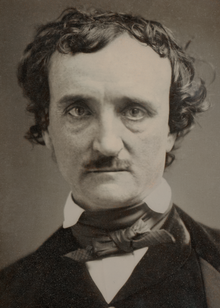About the Book: "Metzengerstein", also called "Metzengerstein: A Tale in Imitation of the German", was the first short story by American writer and poet Edgar Allan Poe to see print. It was first published in the pages of Philadelphia's Saturday Courier magazine, in 1832. Part of a Latin hexameter by Martin Luther serves as the story's epigraph: Pestis eram vivus—moriens tua mors ero ("Living I have been your plague, dying I shall be your death").
"Metzengerstein" follows many conventions of Gothic fiction and, to some, exaggerates those conventions. Consequently, critics and scholars debate if Poe intended the story to be taken seriously or considered a satire of Gothic stories. Regardless, many elements introduced in "Metzengerstein" would become common in Poe's future writing, including the gloomy castle and the power of evil. Because the story follows an orphan raised in an aristocratic household, some critics suggest an autobiographical connection with its author.
The story was submitted as Poe's entry to a writing contest at the Saturday Courier. Though it did not win, the newspaper published it in January 1832. It was re-published with Poe's permission only twice during his lifetime; its subtitle was dropped for its final publication. Poe intended to include it in his collection Tales of the Folio Club or another called Phantasy Pieces, though neither collection was ever produced.
About the Author: Edgar Allan Poe (born Edgar Poe - January 19, 1809 – October 7, 1849) was an American author, poet, editor, and literary critic, considered part of the American Romantic Movement. Best known for his tales of mystery and the macabre, Poe was one of the earliest American practitioners of the short story, and is generally considered the inventor of the detective fiction genre. He is further credited with contributing to the emerging genre of science fiction. He was the first well-known American writer to try to earn a living through writing alone, resulting in a financially difficult life and career.
Born in Boston, Poe was the second child of two actors. His father abandoned the family in 1810, and his mother died the following year. Thus orphaned, the child was taken in by John and Frances Allan, of Richmond, Virginia. Although they never formally adopted him, Poe was with them well into young adulthood. Tension developed later as John Allan and Edgar repeatedly clashed over debts, including those incurred by gambling, and the cost of secondary education for the young man. Poe attended the University of Virginia for one semester but left due to lack of money. Poe quarreled with Allan over the funds for his education and enlisted in the Army in 1827 under an assumed name. It was at this time his publishing career began, albeit humbly, with an anonymous collection of poems, Tamerlane and Other Poems (1827), credited only to "a Bostonian". With the death of Frances Allan in 1829, Poe and Allan reached a temporary rapprochement. Later failing as an officer's cadet at West Point and declaring a firm wish to be a poet and writer, Poe parted ways with John Allan.
Poe switched his focus to prose and spent the next several years working for literary journals and periodicals, becoming known for his own style of literary criticism. His work forced him to move among several cities, including Baltimore, Philadelphia, and New York City. In Baltimore in 1835, he married Virginia Clemm, his 13-year-old cousin. In January 1845 Poe published his poem, "The Raven", to instant success. His wife died of tuberculosis two years after its publication. For years, he had been planning to produce his own journal, The Penn (later renamed The Stylus), though he died before it could be produced. On October 7, 1849, at age 40, Poe died in Baltimore; the cause of his death is unknown and has been variously attributed to alcohol, brain congestion, cholera, drugs, heart disease, rabies, suicide, tuberculosis, and other agents.
Poe and his works influenced literature in the United States and around the world, as well as in specialized fields, such as cosmology and cryptography. Poe and his work appear throughout popular culture in literature, music, films, and television. A number of his homes are dedicated museums today. The Mystery Writers of America present an annual award known as the Edgar Award for distinguished work in the mystery genre.
My Review: The story, told from an unnamed third-person narrator, takes place in Hungary at an unspecified date. The opening passages describe a centuries-long rivalry between two wealthy families: the Metzengersteins and the Berlifitzings. The bitter enmity between the two families is so old that no one knows how far back it dates. The narrator states that its origin appears to rely on an "ancient" prophecy: "A lofty name shall have a fearful fall when, as the rider over his horse, the mortality of Metzengerstein shall triumph over the immortality of Berlifitzing."
Young Frederick, Baron of Metzengerstein, was orphaned at a young age and, thus, inherited the family fortune at age 18 (though the age changes throughout its many re-publications[1]). Equipped with enormous wealth and power, he begins to exhibit particularly cruel behavior. "The behavior of the heir out-heroded Herod".[2] Four days after he receives his inheritance, the stables of the rival family Berlifitzing catch fire. The neighborhood "instantaneously" attributed the act of arson to Frederick Metzengerstein (the story, however, does not say expressly if he did it or not).
That day, Metzengerstein, in his home, sits staring intently at an old tapestry depicting "an enormous, and unnaturally colored horse" that belonged to the Berlifitzing clan. Just behind the horse, Frederick sees its rider who has just been killed by "the dagger of a Metzengerstein". Soon, Frederick sees the horse move and assume "an energetic and human expression". Immediately, Frederick opens the door to leave, and the action strikingly causes his shadow to fall exactly on the spot of the murderer in the tapestry.
Outside, he sees his men handling a horse that is "the counterpart" of the horse in the tapestry. The men tell Frederick that this new, remarkable "fiery-colored" horse has been found in his stables with the letters "W.V.B." branded on its forehead. The equerry says, "I supposed them, of course, to be the initials of William Von Berlifitzing, but all at the castle are positive in denying any knowledge of the horse." Frederick takes ownership of the horse. In the next moment, a page appears and tells Frederick that "a small portion of the tapestry" is missing (presumably the part containing the image of the horse). Frederick also hears, some time later, that old Wilhelm Berlifitzing died in the fire as he tried to save one of his horses in the burning stable.
Thenceforth, Frederick and the "ferocious and demonlike" horse, which no one else but Frederick has dared to touch since its arrival, become seemingly inseparable. Day after day, Metzengerstein rides the animal as if addicted, and he becomes less and less interested in the affairs of his house and of society. He eventually begins to live in seclusion to the extent that others in the neighborhood suspect that he is either mad, sick, or overwhelmingly conceited.
"One tempestuous night", Frederick awakes and maniacally mounts the horse to ride into the forest. Some hours later, the Metzengerstein castle catches fire. A crowd gathers to watch the peculiarly "ungovernable" flames and, soon, see the horse, now carrying "an unbonneted and disordered rider" who clearly has no control over the animal. The sight makes everyone present utter the word "horrible". The animal leaps into the flames with its rider and "disappeared amid the whirlwind of chaotic fire", thereby killing the last of the Metzengerstein clan. Immediately, the fire "died away". In the calm, the horrified onlookers observe a cloud of smoke settle above the castle in the shape of "the distinct colossal figure of — a horse".



No comments:
Post a Comment